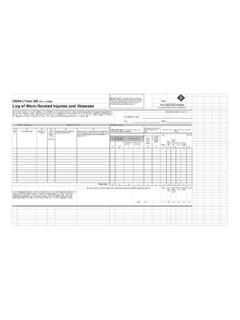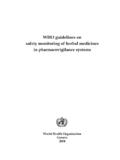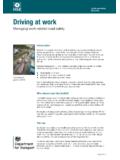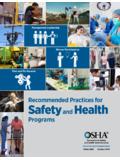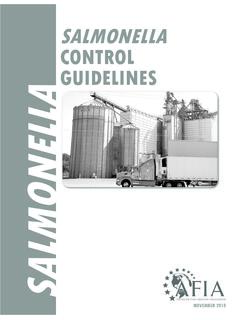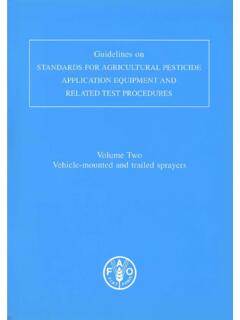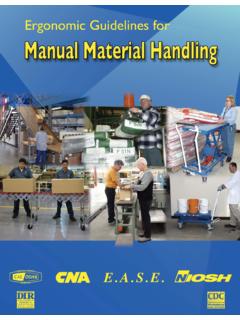Transcription of Tailgate/Toolbox Safety Training - Grosslight Insurance
1 Tailgate/Toolbox Safety TrainingSafety Services Company- Safety Meeting Division, PO Box 6408 Yuma, AZ 85366-6408 Toll Free (866) 204-4786 193 Safety Services Company Company Name: _____ Job Site Location: _____ Date: _____ Start Time: _____ Finish Time: _____ Foreman/Supervisor: _____ Topic 193: Power Washer Safety Introduction: Power washers work on the principle of extremely high pressure (up to 3,000 psi) -- through a tiny vent. As a result, this equipment can be hazardous to both health and home when used incorrectly or at very close range. Wearing the proper clothing when using power sprayers is important. Long-sleeved shirts, long pants, and gloves will help protect against injecting fluid under your skin, should you unintentionally hit the trigger while the nozzle is near you. Careful attention should be taken when using the power washer on buildings; if the pressure setting is too high, or the nozzle is too close to the surface, the water can literally bore into wood siding, break windows, sliding doors or other glass.
2 Below is a list of rules which should be followed to ensure safe operations of power washers: Supervisors must verify that operators are capable and qualified on each type of equipment before allowing the equipment to be operated unsupervised. The operator should make a visual inspection of work area prior to beginning work. Each operator must perform a pre-operational check of their equipment, as well as be familiar with the operator's manual. Report needed repairs promptly. Do not use any equipment that is unsafe. Do not fill the fuel tank while the engine is running. Be extremely careful not to point the power washer towards air hoses, Safety lines, equipment or other personnel. Remember that 0 and 15 degree tips force water at a velocity high enough to cut through concrete. Only the nozzle operator may direct the pump operator when to start the pump.
3 Make sure Safety chains are properly attached at connections, and that all dead man shut-off valves work properly. Attach nozzles or accessories before turning on the water. Never try to repair a leak in the hose while the system is under pressure. High pressure hoses should not be kinked. Check hose fittings for proper connections.. Make sure all hoses and nozzles are in good shape. Do not allow heavy equipment to run over hoses. Let the machine run for several minutes before starting to power-wash. Never leave equipment unattended with the engine running. Keep hands and feet clear of the cleaning nozzle at all times. Do not stand over hoses. Watch for slipping/tripping hazards in the work area. Set the Safety lock when the equipment is not in use. Turn off water at the source and bleed off pressure BEFORE disconnecting hoses. Shut engine off when not in use. Below is a list of suggestions for proper operation of power washers: Follow the equipment manufacturer's directions for distance between the spray head and the surface, typically 6" to 10"; this varies with the and spray width settings.
4 Moving too close may harm the surface; staying too far away may be ineffective. Consider using a special cleaning agent if the surface shows heavy mildew growth. When using an intake hose, make sure hose is not drawing mud, sand or other bottom material into the pump system. Work from the top of the wall to the bottom. Otherwise, dirt and mildew will run down over the already cleaned section. Direct the water at a downward arc when cleaning wood substrates. Spraying wood head-on can damage the siding. Do not direct the spray upward when cleaning wood lap siding; this may damage the siding and cause leaks in the wall. Never leave the nozzle in a closed position more than a minute or two while the equipment is running. The pump may overheat. Do not spray stucco or masonry walls straight on. The force of the spray can cause water to penetrate cracks in the walls and cause damage. Conclusion: Pressure washers should not be plugged into a power source unless you are sure the trigger is in the "OFF" position.
5 Also, never use power equipment in the rain as an electrical short could result. Take the time to clean machine thoroughly at end of shift. Work Site Review Work-Site Hazards and Safety Suggestions: _____ _____ Personnel Safety Violations: _____ Material Safety Data Sheets Reviewed: _____ (Name of Chemical) Employee Signatures: (My signature attests and verifies my understanding of and agreement to comply with, all company Safety policies and regulations, and that I have not suffered, experienced, or sustained any recent job-related injury or illness.) _____ _____ _____ _____ _____ _____ _____ _____ _____ _____ _____ _____ _____ _____ _____ _____ _____ _____ _____ _____ _____ Foreman/Supervisor s Signature: _____ These guidelines do not supercede local, state, or federal regulations and must not be construed as a substitute for, or legal interpretation of, any OSHA regulations.





